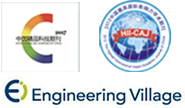Abstract:
The global shortage of freshwater resources was becoming more and more serious, therefore it was necessary to obtain freshwater by desalinate seawater resources. Solar-driven interfacial photothermal evaporation, which was an environmentally friendly, energy-efficient technology, had been used to desalinate seawater for water purification and production. The MoS
2/MS composite calcium alginate (MMCA) hydrogels, which could be used for solar-driven interfacial photothermal evaporation, were successfully prepared by loading MoS
2 and sodium alginate onto melamine sponge (MS) by impregnation and cross-linking methods. The three-dimensional porous network structure and MoS
2 of MMCA hydrogels help to achieve efficient solar light trapping, and the interconnected porous channels and calcium alginate facilitate adequate water vapor transport and escape. The MMCA hydrogel exhibited an evaporation rate of 3.806 kg·m
−2·h
−1 and a photothermal conversion efficiency of 96.87% under 1 solar intensity. The MMCA hydrogel is highly salt resistant and salt tolerant, maintaining an evaporation rate of 3.745 kg·m
−2·h
−1 in seawater with a Na
+ mass content of about 1.0% without salt deposition. In addition, the MMCA hydrogel also showed a removal rate of more than 99% for organic dye pollutants, which is a very high removal effect. MMCA hydrogel has a simple preparation process, excellent hydrophilicity and good evaporation performance, and it has a greater application prospect in the field of seawater desalination and wastewater purification.


 下载:
下载: